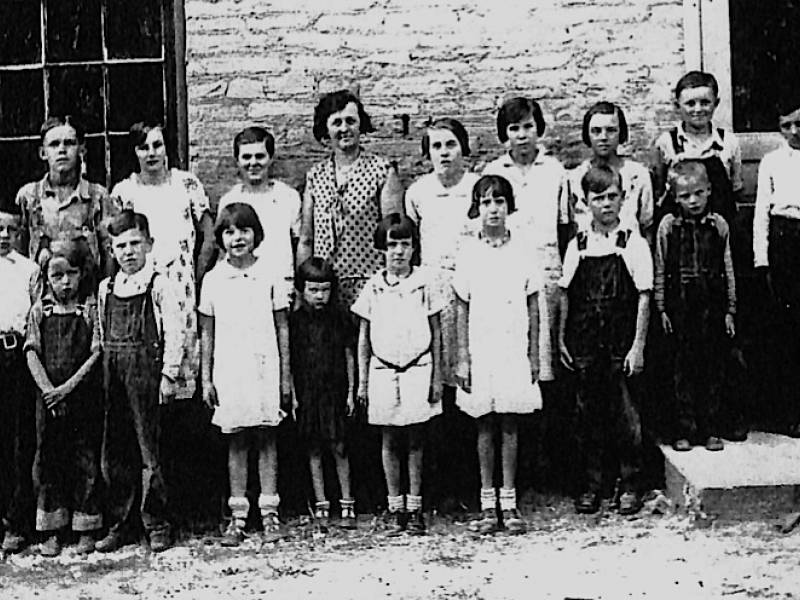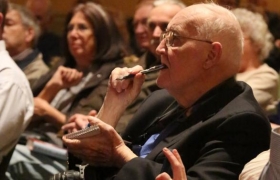Museum, Library & Office Closed
Changing school supplies cost more coin
I have been watching all of the back-to-school ads with equal measures of bemusement and horror. There are so many accouterments nowadays.
It seems a third-grader can no longer just wear blue jeans and a T-shirt to school. Society requires that they make a fashion statement, and not the kind that dominated my elementary experience: dress pants, button-down shirt and leather “school” shoes at least a half-size larger than the year before. No, we’re talking earbuds and smartphones.
“The back-to-school list has changed dramatically,” said Leah Damisch, superintendent of Marengo-Union School District 165. “No loose-leaf paper. Now it’s a bound journal. … Today’s back-to-school list includes antiseptic wipes and ziplock bags for group science projects. And you don’t see sneakers on there anymore. Instead, they wear them to school and get the gym floors all mucked up.”
An ad in an 1894 “Richmond Gazette” simply identifies the following supplies available at A.R. Alexander’s: books, pencils, crayons, slates, tablets, pens, ink and erasers. Boom, done.
By 1977, educators had added things such as paintbrushes, protractors and compasses to their supply list. Today, students complete similar geometry and drafting assignments on a computer.
In August 1980 Crystal Point Mall urged back-to-school shoppers to buy a Random House dictionary – sale price, $1.95 – a $60 corduroy sports coat and a Yamaha stereo system ($430). Today, kids listen to music on an iPod and use an iPad to do their homework.
However, electronic devices must be stored in students’ lockers during class, Damisch said. Learning is done on digital “smart boards” located in each classroom.
“Textbooks are all digital versus paper, pencil and pulp,” she said. “If you took somebody from the 1940s and dropped them into today’s classroom, they’d probably have a heart attack.”
But during instances when the internet is down, students also have old-fashioned textbooks to rely on. It does not cost more to have both, Damisch said, and she does not want learning to stop.
“Our kids do a lot of work on computers, but we still teach cursive. We still have K-6 reading anthologies. They hold books in their hands,” Damisch said. “Common Core is about application, synthesis and putting that application into process. We want them to be able to take information and be able to apply it.”
Two big hurdles, she said, are revolving state assessment criteria (Illinois uses the Partnership for Assessment of Readiness for College and Careers test) and societal problems that include poverty and health care concerns.
“There are so many more kids who have allergies now than you could ever believe,” Damisch said. “It helps to keep the desks washed and the areas clean.”
The National Retail Federation is projecting back-to-school spending this fall to reach $83.6 billion – up more than 10 percent from last year. Families with children in elementary through high school plan to spend an average $687.72 each, for a total of $29.5 billion, an 8 percent increase from last year’s $27.3 billion. Total spending is the second highest in the history of the survey after a peak of $30.3 billion in 2012.
The NRF survey projects that college students and their families plan to spend an average of $969.88, up from last year’s $888.71. Total spending is expected to be $54.1 billion, up from $48.5 billion last year and surpassing 2012’s record of $53.5 billion. Clothing and electronics head the list.
According to Deloitte LLP, back to school is the second largest shopping season of the year. It also accounts for half of all school-related spending.
Key findings from Deloitte’s 2017 Back-To-School Survey include:
• There is a growing interest in internet shopping, but in-store purchases are expected to account for twice that of those made online.
• Market share is moving away from department stores and specialty channels, toward mass merchants and discount stores.
• One quarter of the 1,200 parents polled plan to use social media purposes to find promotions and coupons and to browse.
Today, bottles of Elmer’s glue have been replaced with glue sticks and rounded scissors with the pointed variety. Many parents need to buy their first-graders a set of computer headphones. Still, when it gets right down to it, the one-on-one learning that occurred when 120 one-room schools dotted McHenry County hasn’t changed all that much. It’s just packaged differently.
• • •
Visit the McHenry County Historical Society booth Tuesday through Sunday during the McHenry County Fair in Building F. Take a chance on winning a one-of-a-kind, hand-stitched quilt and/or buy fabric for your own project. View a display of historic county photographs from the Society’s postcard collection, and learn about what MCHS has been up to.
• Kurt Begalka, former administrator of the McHenry County Historical Society & Museum.
Published July 31, 2017, in the Northwest Herald.
 © 2025 MCHS- All Rights Reserved.
© 2025 MCHS- All Rights Reserved.















